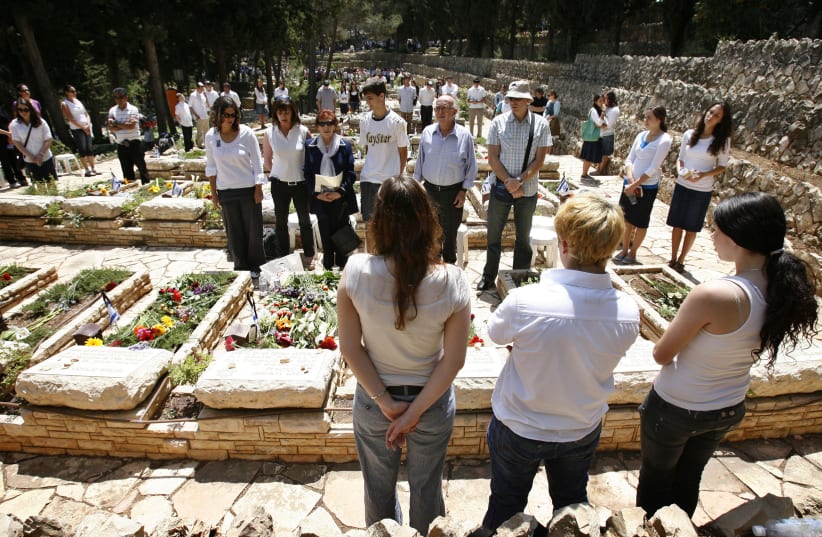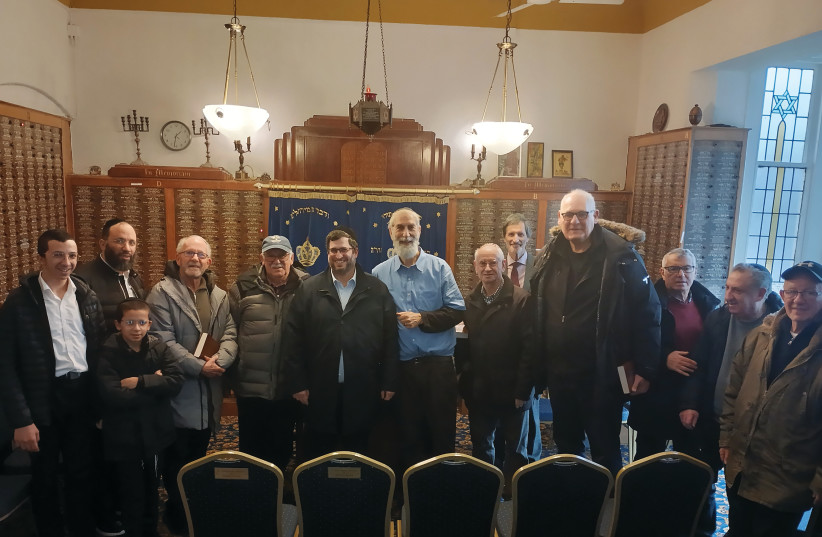Who’s Anita Minyan? Hint: I need a minyan.
You’ll find out more about Anita by reading Kaddish Around the World: Uplifting and Inspiring Stories (Targum Publishers. Soft cover, 101 pages), a collection of stories compiled by Toronto-based Rabbi Gedalia (Gary) Zweig. They describe the supreme efforts of mourners to find a minyan, a prayer quorum of 10 men, in many countries and in the most unlikely places for the recitation of the Mourner’s Kaddish, a time-honored Jewish practice.
The Kaddish prayer is recited in Aramaic. Although often described as a prayer for the deceased, it does not mention death; rather, it is a hymn that praises God and sanctifies His name. The sons of the deceased recite it at the funeral, during shiva (the week of mourning), three times a day at prayer services for the ensuing 11 months, and once a year on the yahrzeit, the anniversary of the death. If there are no sons, the relatives or friends of the deceased must ensure that another male takes the obligation upon himself for the spiritual benefit of the person who has passed.
Kaddish Around the World is a sequel to Living Kaddish (2007), which Zweig wrote after the loss of his mother. He is passionate about this ritual. Inspiring others to say Kaddish for their loved ones and not to give up in the face of challenges is a mission of his.
In fact, Zweig has taken it upon himself to say Kaddish for four victims of the Oct. 7 massacre. He knows of others who are doing the same, he told the Magazine.
“First of all, it’s a benefit to the soul of the deceased,” he said. “I found a list of about 650 names of [murdered] civilians. To see the names of the people is very moving, even if you don’t know any of them personally. There might be a common name, like David Cohen, for example. You likely know a David Cohen, so you can relate to it. On a recent trip to Israel, I visited Kfar Aza. Saying Kaddish for them [the victims] is very meaningful to me.”
The Magazine asked if doing so had brought comfort to the families.
“I hope so. There’s no way for me to know,” he replied. But he also hopes that as the initiative gains more publicity, the families of the victims will become aware of it, and more people will take it upon themselves to recite the Kaddish for others.
Note: Zweig’s interview with the Magazine has been shortened for space and clarity.
What inspired you to write these books?
The first one was when my mother passed away and I couldn’t get a minyan in Orlando [Florida], although there are 20,000 Jews there, and then I learned that other people had similar stories. Regarding the second book, my dad – who had reached 101 years old – died, and I thought it would be beneficial to the Jewish community to share my experiences and those of others. You have the very frum [strictly Orthodox] who will say Kaddish no matter what, and the not-so-frum. We lost a lot [of people] during COVID. Shuls were not the same and people were on Zoom, so I said that we’ve got to get people back on board.
What’s different about this book compared to the first?
This edition is literally Kaddish around the world. The stories are based in 17 or 18 countries where people have found a way to make a minyan, and it’s really inspiring.
From what you’ve seen, do most men find it a burden or a source of comfort?
It depends on how you look at it. In the cellphone generation, people might think, ‘Oh, I’ve got to do this; give it to someone else.’ But you shouldn’t give it to someone else; you’re supposed to do it yourself. On the other hand, the attitude can be different, like in the story about a guy who was on a safari in Kenya and didn’t think he’d manage to say Kaddish, but then a group of Israelis showed up.
As the book illustrates, it is permissible to do almost anything to get a minyan. A friend told me that when he looks for a good minyan downtown, he always says, ‘You’re the 10th one’ because if he’d say, ‘You’re the fifth,’ the person probably wouldn’t come.
I’m just trying to get more people involved. I was hanging out at the bookstores in England, and the response there was amazing. I had stopped off in London, and my cousin there asked if there was anything else I’d like to see. I said: ‘Liverpool.’ I’m a huge Beatles fan. So he called up the rabbi in Liverpool, who said, ‘Of course.’ We went there, and I asked the rabbi if he had heard of Brian Epstein, who was the manager of The Beatles. He pointed to Epstein’s yahrzeit plaque. The rabbi then arranged a breakfast at the shul for about 35 people, and right after that, we went – literally, five minutes away – to Paul McCartney’s boyhood home. In that tiny house, he wrote 70 songs. Later, we did Mincha [the afternoon service]. I just loved it there. It was great. Then we saw one of the most historic shuls in Liverpool, the Princess Rhodes Synagogue, so I joked that we had Beatlemania but now we have Kaddishmania.
The whole purpose of Kaddish Around the World is to show that you can go anywhere and continue to say Kaddish.
In recent years, many women have been saying Kaddish, but it’s not an obligation, according to Halacha [Jewish law]. The stories are all about men. Do you think that women are missing out on something special?
I’ll tell you straight out: When I was working on this book, I had two stories from women that I wanted to include... Instead, I put in a story about a woman who didn’t say Kaddish but built a mikveh [ritual bath] in her hometown. She said she’s not obligated to say Kaddish; however, she wanted to do something that’s equally important in memory of her loved one.
Not everyone can afford to do something like that.
I agree with you. The way I see it is this: In the religious world, in most shuls they need to get a minyan of 10 men. If they don’t have 10 men, they don’t have a minyan. Telling a woman to come to the minyan doesn’t do anything for them. It’s good for the woman, of course; she could say Kaddish. She’s allowed to. And I think she should; I would encourage it. But the mitzvah, the obligation, is on the man.
ZWEIG MENTIONS the Kaddish calendar at the end of the book, where he offers suggestions for different themes and areas of focus for each of the 11 months of Kaddish, to keep the mourner inspired.
“I did that because after four or five months, maybe they’ll get tired or maybe it’s too cold. It’s like you’re running 11 miles. So you’ll run two miles at a time. That’s basically what it is – a way to keep the memory alive throughout the year and make the experience more meaningful. You have to stay motivated.”
Kaddish Around the World is a delightful book, not just for mourners. Whether it’s an amusing story like the one about Anita Minyan, which will make you laugh out loud, or one that moves you to the core, these stories by diverse writers are highly entertaining and definitely worth reading.
The book is available at several stores in Israel and in Jewish bookstores in the US, Canada, and London, as well as on Amazon.

